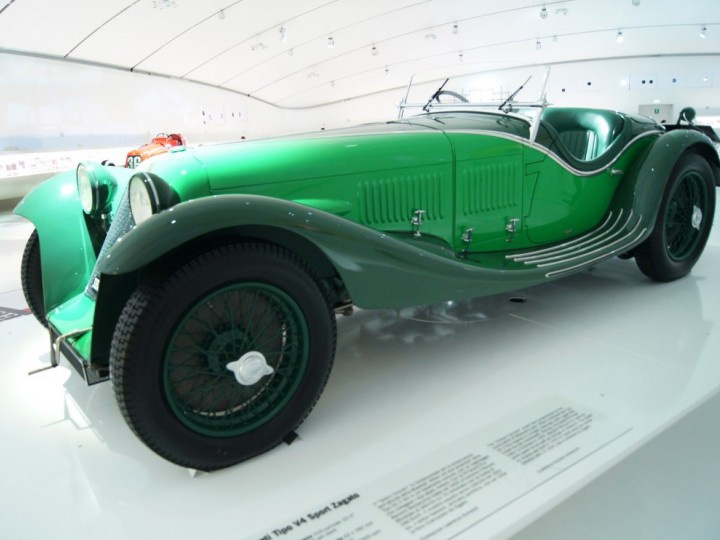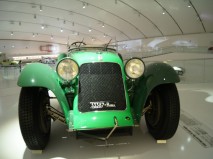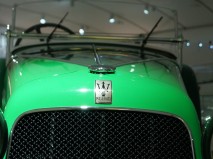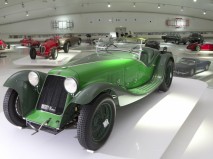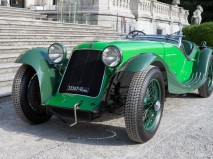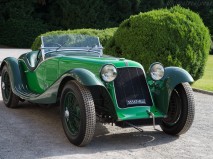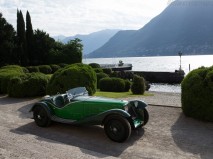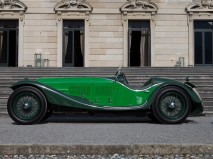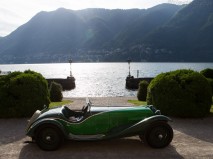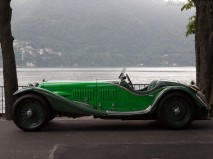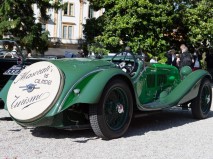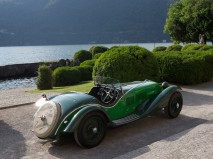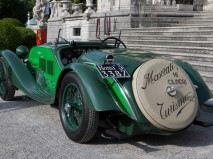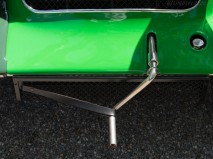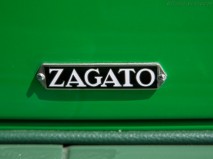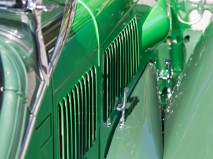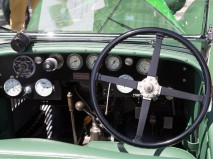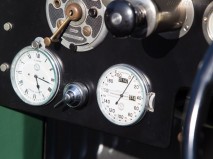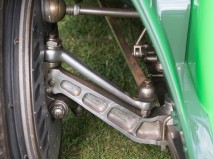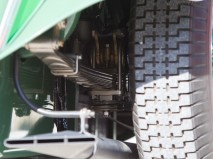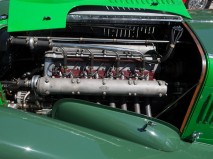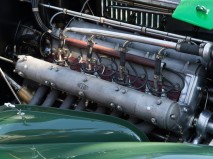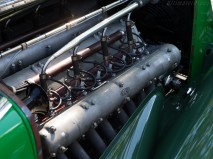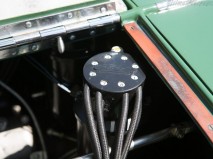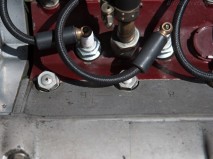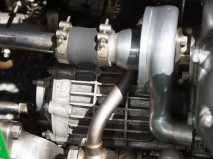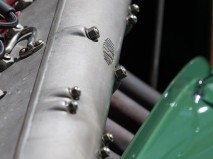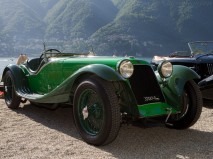1932 Maserati Tipo V4 Sport Zagato
(Lawrence Auriana collection)
Engine : V16 22.5o
DOHC per bank.
Bore & Stroke : 62 mm x 82 mm
Total displacement - 3961 cc
Power - 280 hp at 5500 rpm
Top speed - 250 km/h
The "Sixteen Cylinder" model was fundamental for the continuation of Maserati's work Alfieri combined two Tipo 26 2-litre engines in a single crankcase, with a gear that linked the two crankshafts Racing a V4 Grand Prix over 10 km in Cremona in 1929, Baconin Borzacchini beat the world speed record with an average of 246 km/h. The model on display was built in 1932 for papal physician doctor Galezzi who, in 1934, had it rebodied by Zagato.
Completed late in 1932, this was the second of the two Maserati V4s constructed. Fitted with a sports car body, it was sold to a wealthy physician in Rome, whose clients included the pope himself. Professor Galeazzi Riccardo entered the car in the 1934 Tripoli Grand Prix for Carlo Gazzabini, who retired after just 5 laps. The V16 Maserati was subsequently sent to Zagato where it was fitted with a striking roadster body, finished in an unusual two-tone green. To clearly inform other road users what had just passed them, the spare-wheel cover read 'Maserati 16 Cilindri Turismo'.
By the end of the decade, the unique V4 was sold to Dutch enthusiast Erik Verkade, who also had a brand new Maserati Grand Prix car on order. Due to the threat of War, he could not take delivery of his new 4CL and decided to enjoy the V4 instead. Soon after the Germans invaded, he dismantled the car and hit the precious V16 engine in his bedroom, where it remained for five years. Once the War was over, Verkade rebuilt the Maserati and drove it straight to the Maserati factory to finally pick up the 4CL. In what must have been a spectacular convoy, he towed the new Maserati Grand Prix back to The Netherlands with the V16. He would go on to bring the 4CL to several race meetings in similar fashion.
By the end of 1946, the Zagato-bodied V4 was sold to the United Kingdom where it understandably grabbed a lot of attention and was also featured in a Motorsport Magazine article. The car remained on the British isles until the late 1990s, when it passed into the hands of the current custodian and joined a formidable stable of Italian machinery. It has since been completely restored to its 1934 configuration, down to the two-tone green finish. At a rare outing, it is seen here during the 2014 Concorso d'Eleganza Villa d'Este.


